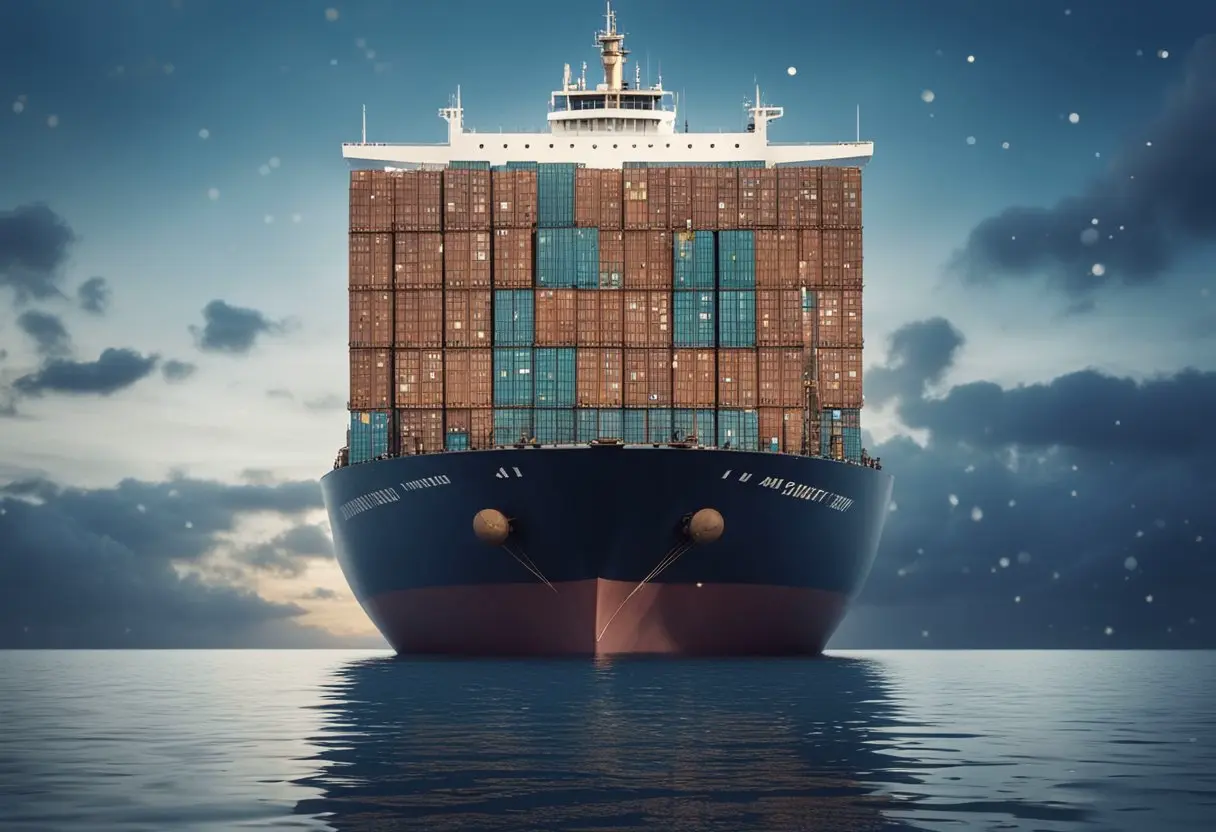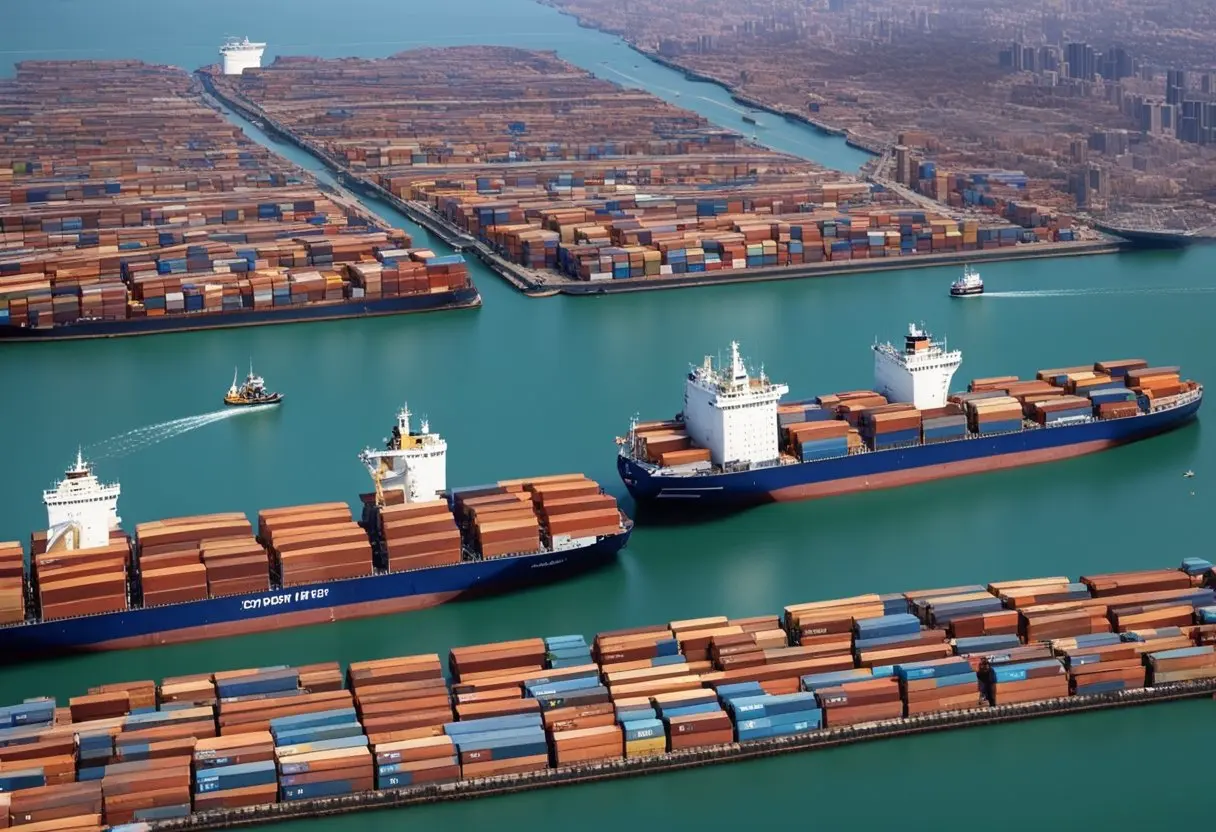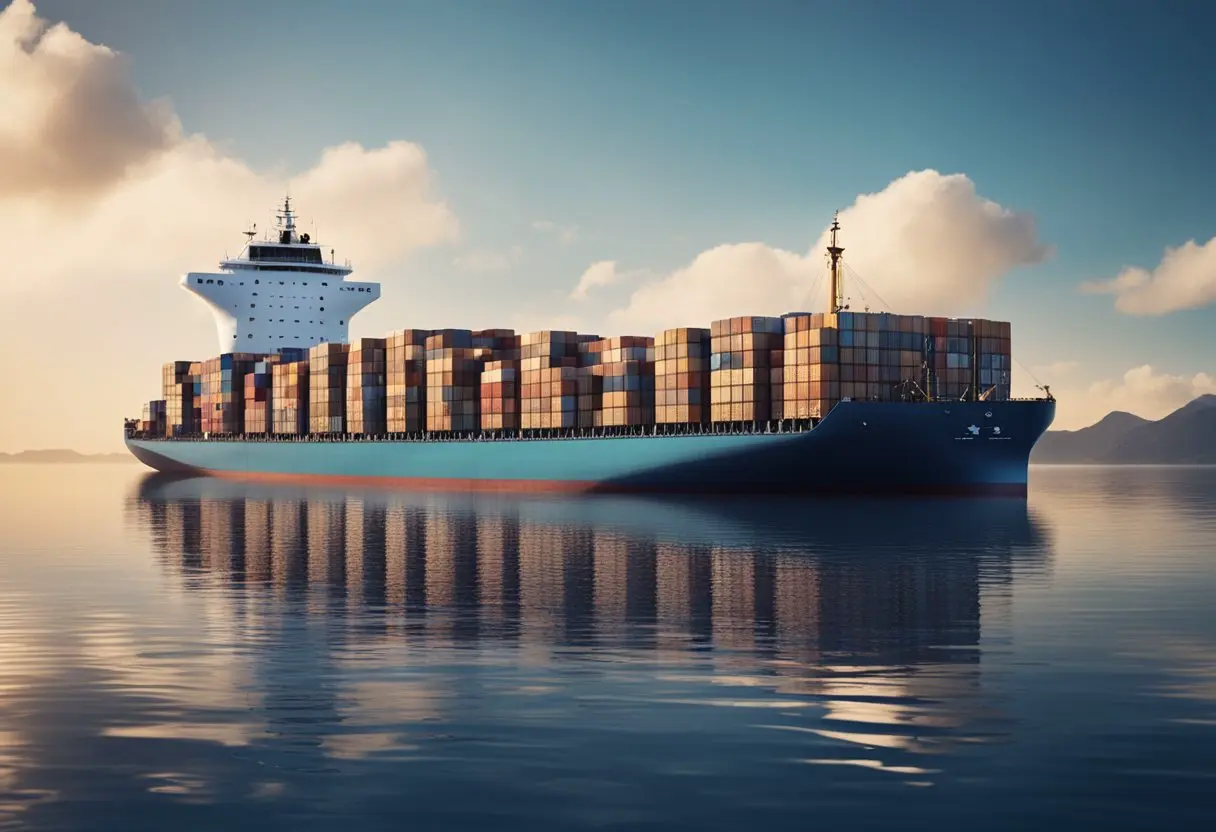Why Giant Cargo Ships Float While Tiny Nails Sink: When we think about floating and sinking, we often picture a small object, such as a pebble or a paperclip, sinking to the bottom of a pool. However, when it comes to massive cargo ships, we may wonder how they can stay afloat despite their enormous weight. The answer lies in the principles of buoyancy and density, which govern the behavior of objects in water.
Buoyancy is the upward force that water exerts on an object, while density is the measure of how much mass is contained in a given volume. When an object is placed in water, it displaces an amount of water equal to its volume. If the object is less dense than the water it displaces, it will float; if it is more dense, it will sink. The relationship between buoyancy and density is what allows giant cargo ships to stay afloat despite their weight.
Principles of Buoyancy

Buoyancy is the ability of an object to float on a fluid, and it is dependent on two primary factors: the weight of the object and the weight of the fluid it displaces. Understanding the principles of buoyancy is essential in explaining why giant cargo ships float while tiny nails sink.
Archimedes’ Principle
Archimedes’ principle, named after the ancient Greek mathematician Archimedes, states that the buoyant force on an object in a fluid is equal to the weight of the fluid displaced by the object. This principle explains why objects that are less dense than the fluid in which they are immersed will float, while objects that are denser than the fluid will sink.
For example, a giant cargo ship may weigh thousands of tons, but it is designed to displace a volume of water that is much greater than its weight. The buoyant force of the water on the ship is greater than the weight of the ship, allowing it to float.
Density and Displacement
The density of an object also plays a crucial role in determining its buoyancy. An object’s density is defined as its mass per unit volume. If the density of an object is less than the density of the fluid in which it is immersed, it will float. If the density of an object is greater than the density of the fluid, it will sink.
When an object is placed in a fluid, it displaces a volume of fluid equal to its volume. The weight of the displaced fluid is equal to the buoyant force acting on the object. If the buoyant force is greater than the weight of the object, the object will float.
In short, the principles of buoyancy explain why giant cargo ships float while tiny nails sink. The weight of the object and the weight of the fluid it displaces are the primary factors that determine an object’s buoyancy. By understanding these principles, scientists and engineers can design and build ships that can carry massive amounts of cargo while remaining afloat.
Design of Cargo Ships

Hull Shape and Volume
One of the key factors that determine why giant cargo ships float while tiny nails sink is the design of their hull. Cargo ships have a large, curved hull that displaces a large volume of water. This shape allows the ship to float by taking advantage of the principle of buoyancy, which states that an object will float in water if it displaces a volume of water that weighs more than the object itself.
The hull of a cargo ship is designed to be as streamlined as possible to reduce drag and improve fuel efficiency. The shape of the hull is also designed to reduce the effect of waves and other disturbances on the ship’s stability. The hull is typically made of steel or other strong materials to withstand the stresses of the open sea.
Use of Ballast Tanks
Another important feature of cargo ships is the use of ballast tanks. These tanks are used to adjust the ship’s weight and balance, which is critical for maintaining stability in rough seas. When the ship is loaded with cargo, the ballast tanks are filled with seawater to increase the ship’s weight and improve stability.
When the cargo is unloaded, the ballast tanks are emptied to reduce the ship’s weight and maintain stability. The use of ballast tanks allows cargo ships to remain stable and upright in a variety of sea conditions, making them ideal for transporting large quantities of goods across long distances.
In summary, the design of cargo ships, including their hull shape and volume and use of ballast tanks, allows them to float and remain stable in a variety of sea conditions. These features are critical for transporting large quantities of goods across long distances and are a testament to the ingenuity and engineering prowess of naval architects and shipbuilders.
Material Properties of Cargo Ships
Steel Construction
Giant cargo ships are made of steel, which is a strong and durable material. Steel is an alloy of iron and carbon, and it can withstand heavy loads and stress. The steel used in cargo ships is also treated to make it resistant to corrosion and rust, which is important for a material that is constantly exposed to water.
The construction of the ship is also designed to distribute weight evenly, which helps to prevent the ship from sinking. The weight of the cargo is evenly distributed across the ship’s hull, which helps to maintain its stability. The ship’s hull is also reinforced to withstand the pressure of the water, which is important for a vessel that is constantly in motion.
Waterproof Compartments
Another key factor that allows giant cargo ships to float is the presence of waterproof compartments. These compartments are designed to prevent water from entering the ship in the event of a leak or other damage. The ship is divided into several watertight compartments, which are separated by bulkheads.
If water enters one compartment, the bulkheads prevent it from spreading to other areas of the ship. This helps to maintain the ship’s buoyancy, even if one compartment is damaged. The compartments are also equipped with pumps that can be used to remove any water that does enter the ship.
Overall, the combination of steel construction and waterproof compartments allows giant cargo ships to remain afloat, even when carrying heavy loads.
Physics of Sinking Objects

Mass and Volume Relationship
The buoyancy of an object is determined by the relationship between its mass and volume. According to the principle of buoyancy, an object immersed in a liquid will experience an upward force called the buoyant force. The buoyant force is equal to the weight of the fluid displaced by the object. If the object is less dense than the liquid, it will float, and if it is more dense, it will sink.
The density of an object is determined by its mass per unit volume. Therefore, an object with a greater mass per unit volume will be more dense and will sink in a liquid of lesser density. For example, a giant cargo ship can float on water because it has a large volume and relatively low density, even though it has a massive weight. On the other hand, a tiny nail sinks in water because it has a small volume and high density.
Surface Tension Effects
The surface tension of a liquid also plays a role in determining whether an object will sink or float. Surface tension is the property of a liquid that causes it to form a thin film on its surface. This property creates a force that can support small objects on the surface of the liquid.
For example, a paper clip can float on water if it is placed gently on the surface because of the surface tension of water. However, if the paper clip is pressed down into the water, it will sink because the buoyant force is not enough to overcome the weight of the paper clip.
In summary, the buoyancy of an object is determined by its mass per unit volume and the density of the liquid it is placed in. Additionally, surface tension effects can also play a role in the buoyancy of small objects.
Comparative Analysis
Cargo Ships vs Small Objects
Giant cargo ships can carry thousands of tons of cargo across oceans, while tiny nails sink in a glass of water. The concept of displacement can explain the difference in buoyancy between these two objects.
According to the principle of buoyancy, an object immersed in a fluid experiences an upward force equal to the weight of the fluid displaced by the object. This means that if an object weighs less than the fluid it displaces, it will float, and if it weighs more, it will sink.
Cargo ships are designed to displace a large amount of water, which allows them to float despite their enormous weight. They have a hollow hull filled with air, making them less dense than the water they displace. This means that they can carry a heavy load without sinking.
In contrast, small objects like nails are much denser than water, which means that they displace very little water and experience a downward force greater than the upward buoyant force. As a result, they sink.
Impact of Shape and Density
The shape and density of an object also play a significant role in determining its buoyancy. For example, a flat piece of metal may sink in water, while a boat made of the same material may float. This is because the boat is designed to displace more water than the flat piece of metal, and its shape allows it to distribute its weight more evenly.
Similarly, objects with a low density, such as foam or wood, will float in water because they displace more water than their weight. On the other hand, objects with a high density, such as lead or iron, will sink because they displace very little water.
In conclusion, the buoyancy of an object is determined by its weight, the amount of water it displaces, and its density and shape. Cargo ships are designed to displace a large amount of water, which allows them to float despite their enormous weight, while small objects like nails have a high density and displace very little water, which causes them to sink.
Related Posts:
